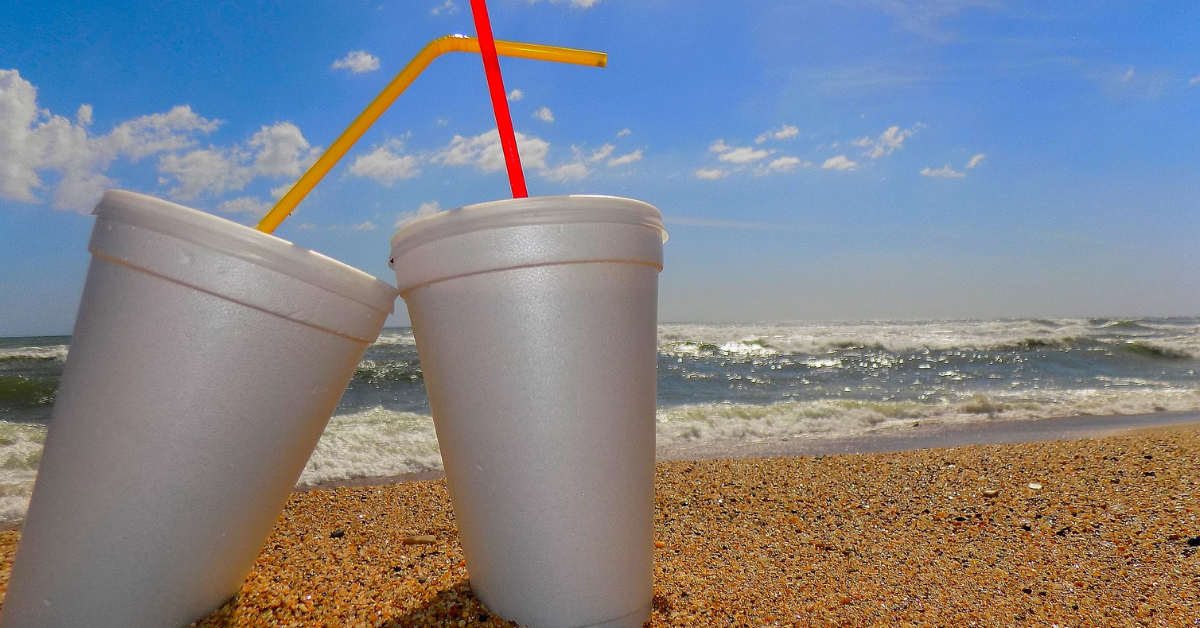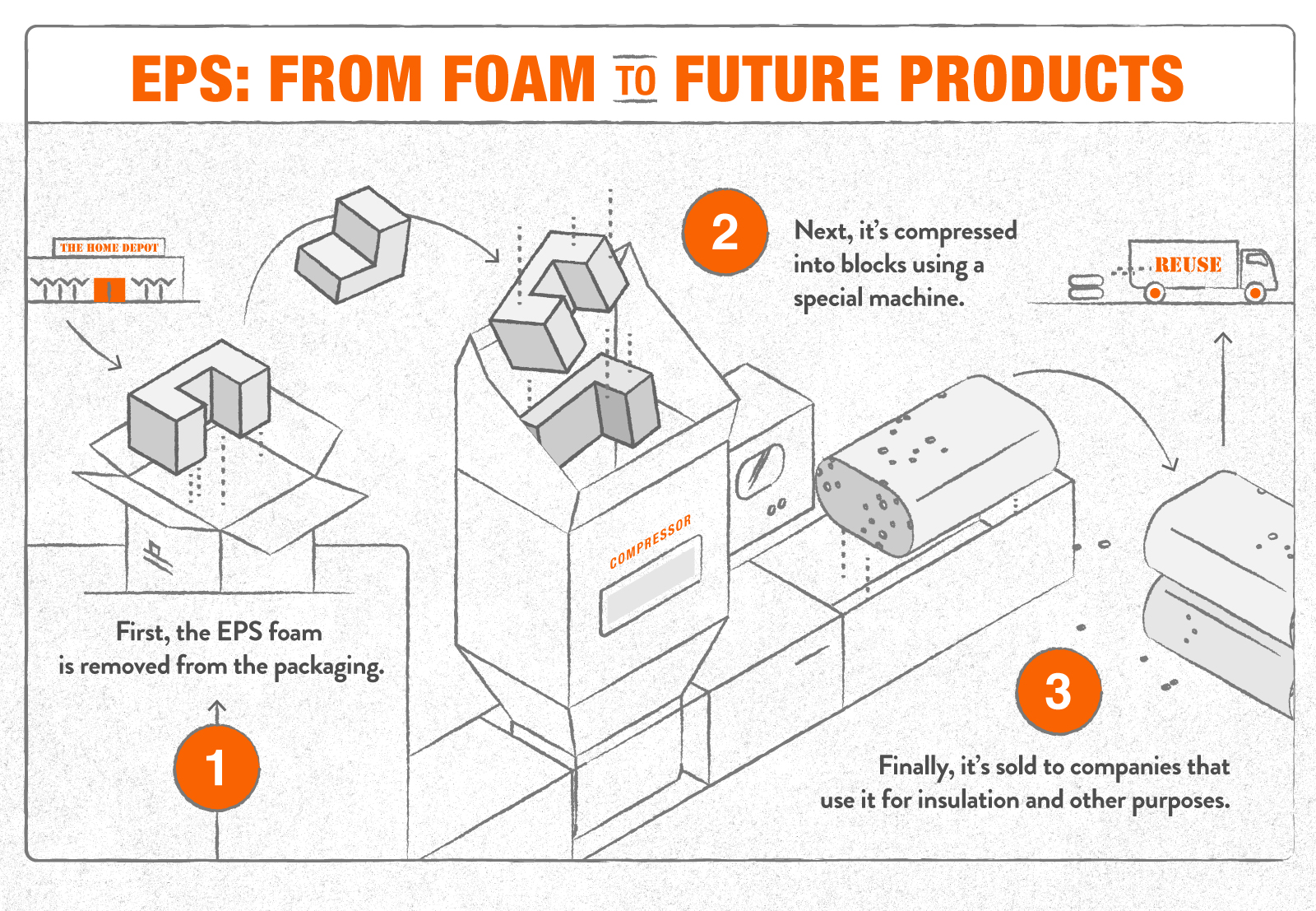I live in California. California is at the leading edge of environmental regulations that aim to end the proliferation of harmful single-use materials. Just recently, my home city of San Diego completed a 4 year long legal process to ban styrofoam containers from use in restaurants and other businesses. Good riddance! Styrofoam recycling is much more difficult than banning it.
But, most of you likely live in places where biodegradable packaging is not legally mandated. You probably use a LOT of styrofoam on a monthly basis whether you want to or not.
In our modern world, Styrofoam has become a ubiquitous presence. Lightweight, affordable, and excellent at insulation, Styrofoam is often the material of choice for food service, packaging, and a variety of other applications. However, this popularity has an environmental cost, with Styrofoam often littering landscapes and waterways due to its slow degradation rate. So, it begs the question: is Styrofoam recyclable, and if so, how? Let’s take a deep dive into the journey of Styrofoam, from its uses to the complexities of its recycling process.
Overview of Styrofoam
Styrofoam, a brand name for expanded polystyrene foam (EPS), is a type of plastic made from petroleum byproducts. Its unique structure of tiny enclosed air pockets gives it its lightweight nature and insulating properties.
Unfortunately, these same characteristics also make it problematic for our environment. Styrofoam takes hundreds, if not thousands, of years to break down, and during its long life, it can leach harmful chemicals into our ecosystems, contributing to pollution and endangering wildlife and even human health.
Moreover, the sheer volume of Styrofoam used worldwide adds to the problem. From takeaway coffee cups to protective packaging for electronics, Styrofoam has become a staple of convenience in our fast-paced society. But where does all this Styrofoam end up once we’re done with it?

Learn more about the history of expanded polystyrene foam in our post on the inventors of plastic
Is Styrofoam Recyclable?
Yes, Styrofoam recycling is technically possible. However, the reality is not quite as straightforward. Styrofoam cannot be recycled through most municipal recycling programs, as it requires specialized facilities and processes.
One of the main challenges lies in the fact that Styrofoam is 95% air, which means it takes up a lot of space relative to its weight. This makes the economics of Styrofoam recycling tricky, as transporting it to recycling facilities often costs more than the value of the recycled product.
Home Depot found innovative ways to start recycling styrofoam. The secret lay in processing it on-site, rather than transporting it from one site to another, and wasting so much fuel for such a tiny mass of eps foam.
Furthermore, not all Styrofoam is recyclable. Food or drink containers made from Styrofoam, for instance, are often contaminated with waste, making them unsuitable for recycling. Even if you were to scrub them with soap and make them spotless, a recycling center may recognize them as takeout containers and toss them.
The Process of Styrofoam Recycling
So, how is Styrofoam recycled? It’s a process that involves several stages. First, Styrofoam needs to be collected and transported to a recycling facility equipped to handle it. The most common items include: unused food and beverage containers, egg cartons, packing peanuts, packaging for shipping, and so many use-once beach coolers. At these facilities, the Styrofoam is often compacted to reduce its volume, before being shredded into tiny pieces.
Next, these pieces are heated and extruded to create a denser form of polystyrene. This densified polystyrene can then be molded into pellets, which can be used to make a variety of new products, from picture frames to building insulation.

However, the process is not without its challenges. The machinery required for recycling Styrofoam is specialized and expensive, which contributes to the limited number of facilities capable of processing this material. Additionally, the end product of recycled Styrofoam is often of lower quality than virgin polystyrene, which can limit its applications. Packing peanuts are a great application, but food and beverage containers are not.
Despite these challenges, advancements are being made in Styrofoam recycling technologies. Innovations like Styrofoam densifiers are helping to make the process more efficient and cost-effective, paving the way for expanded options to avoid sending expanded polystyrene to the landfill.
Styrofoam Recycling Centers
Given the complexities of Styrofoam recycling, specialized Styrofoam recycling centers play a crucial role. These centers have the necessary equipment and processes in place to recycle Styrofoam effectively, turning what was once waste into valuable material. Finding these centers, however, can be a challenge in itself, as they are not as common as standard recycling facilities.
Many municipalities provide resources online to help residents locate nearby recycling centers that accept Styrofoam. Some communities also hold periodic collection events for materials like Styrofoam that are not typically accepted in curbside recycling programs.
Alternatives to Styrofoam
While improving Styrofoam recycling is important, another key piece of the puzzle is reducing our reliance on Styrofoam altogether. There are numerous eco-friendly alternatives available that can serve the same purposes as Styrofoam, without the associated environmental impacts.
Compostable packaging materials, for example, can be used in place of Styrofoam for food service and protective packaging applications. These materials are made from renewable resources like corn starch or sugarcane and can be composted at the end of their life, reducing waste.
Other alternatives include mushroom-based packaging, which is biodegradable and renewable, and recycled paper products, which have a lower environmental impact than Styrofoam and are widely recyclable.
Switching to these alternatives not only reduces Styrofoam waste but also supports industries that are innovating for a more sustainable future.
Conclusion
The path to Styrofoam recycling is fraught with challenges, but not insurmountable. Through advancements in technology, increased accessibility to recycling centers, and a shift towards more sustainable alternatives, we can reduce the environmental impact of Styrofoam.
It’s essential to remember that our individual actions matter. By making informed choices, we can contribute to a larger change. Whether it’s opting for a reusable coffee cup, choosing products with eco-friendly packaging, or taking the time to recycle Styrofoam properly, every small action contributes to a more sustainable world.
In the end, Styrofoam recycling is just one part of the larger puzzle of waste management and environmental sustainability. By understanding the complexities of this issue, we can better navigate the choices we make and their impact on our planet. Let’s continue to learn, innovate, and make choices that support a healthy and sustainable world.